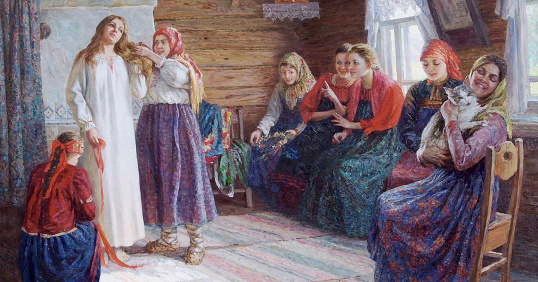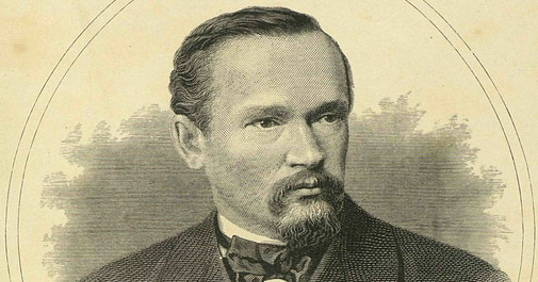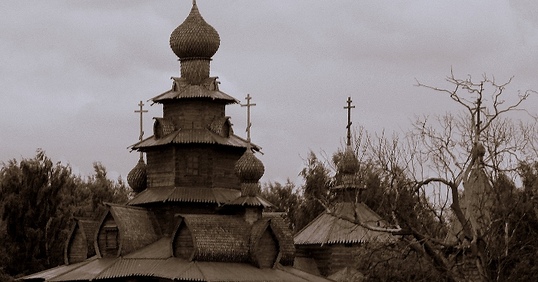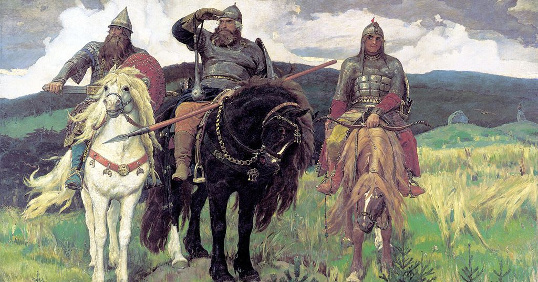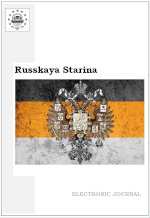1 June 06, 2020
To the 75th Anniversary of the Victory in the Great Patriotic War: History and Memory
1. Evgeny F. Krinko
The Great Patriotic War in the Historical and Anthropological Researches
Russkaya Starina, 2020, 11(1): 4-13.
Number of views: 615 Download in PDF
2. Maxim V. MedvedevRusskaya Starina, 2020, 11(1): 4-13.
Abstract:
The recent historiography is characterized by increased attention to a human. The purpose of the article is to reveal new directions and approaches in the study of the history of the Great Patriotic War, which took shape mainly in the 1990–2000s, allowing one to “return” the “human dimension” to its events. The article is based on historiographic sources – modern studies of Russian and foreign authors. These works examine various problems of the Great Patriotic War in the framework of historical anthropology and related areas: the history of mentalities, the history of everyday life, microhistory, and gender history. All these areas are distinguished by the shift of attention from the state institutions to the human world in all its diversity and interaction with other people, behavioral strategies and conditions for the survival of individuals and groups, wartime symbols and rituals. The article was written on the basis of a systematic approach, the author used the problem-chronological method, the methods of mainstreaming and logical analysis.
The recent historiography is characterized by increased attention to a human. The purpose of the article is to reveal new directions and approaches in the study of the history of the Great Patriotic War, which took shape mainly in the 1990–2000s, allowing one to “return” the “human dimension” to its events. The article is based on historiographic sources – modern studies of Russian and foreign authors. These works examine various problems of the Great Patriotic War in the framework of historical anthropology and related areas: the history of mentalities, the history of everyday life, microhistory, and gender history. All these areas are distinguished by the shift of attention from the state institutions to the human world in all its diversity and interaction with other people, behavioral strategies and conditions for the survival of individuals and groups, wartime symbols and rituals. The article was written on the basis of a systematic approach, the author used the problem-chronological method, the methods of mainstreaming and logical analysis.
Number of views: 615 Download in PDF
Southern Front Offensive of July 17 – August 2, 1943: Successes and Failures of the Operation
Russkaya Starina, 2020, 11(1): 14-25.
Number of views: 652 Download in PDF
3. Alla B. Staseva, Irina G. Kirillova, Boris I. Maksimov, Nataliya V. Zolotova, Anna N. Pchelkina, Nadezhda K. Shmonina, Rezeda R. GareevaRusskaya Starina, 2020, 11(1): 14-25.
Abstract:
The article discusses the Mius offensive operation of the Southern Front, carried out from July 17 to August 2, 1943, with the aim of liberating the western parts of the Rostov region and Donbass. From October 1941 until the end of the summer of 1943, the border along the Mius river remained the site of the most fierce and bloody battles in the Don. The line of German defense along the Mius river received in the enemy’s propaganda the name of Mius Front. It was here that in July – August 1943 the key battles of the Red Army forces over the crushing of the Mius Front began, which remained in the shadow of the Battle of Kursk. The author draws attention to the fact that this operation, despite its incompleteness, played an important strategic role. It turned out that the enemy had thrown large tank formations from near Kharkov and from the Kursk Bulge, weakening its group on the main direction of the Soviet-German front at that time. However, despite the advantage of the Soviet troops in the number of personnel and armored vehicles, it was still not possible to achieve a victorious result.
The article discusses the Mius offensive operation of the Southern Front, carried out from July 17 to August 2, 1943, with the aim of liberating the western parts of the Rostov region and Donbass. From October 1941 until the end of the summer of 1943, the border along the Mius river remained the site of the most fierce and bloody battles in the Don. The line of German defense along the Mius river received in the enemy’s propaganda the name of Mius Front. It was here that in July – August 1943 the key battles of the Red Army forces over the crushing of the Mius Front began, which remained in the shadow of the Battle of Kursk. The author draws attention to the fact that this operation, despite its incompleteness, played an important strategic role. It turned out that the enemy had thrown large tank formations from near Kharkov and from the Kursk Bulge, weakening its group on the main direction of the Soviet-German front at that time. However, despite the advantage of the Soviet troops in the number of personnel and armored vehicles, it was still not possible to achieve a victorious result.
Number of views: 652 Download in PDF
The Feat of the Medical Staff of the Evacuation Hospitals No. 3062 and No. 3070 in Kanash Town of the Chuvash ASSR during the Great Patriotic War
Russkaya Starina, 2020, 11(1): 26-40.
Number of views: 652 Download in PDF
Russkaya Starina, 2020, 11(1): 26-40.
Abstract:
The article deals with the activity of two evacuation hospitals № 3062 and № 3070 in Kanash town of Chuvash ASSR during the Great Patriotic War. The article is written on the basis of documents from the Central Archive of the Ministry of Defense of the Russian Federation, the State Archive of Modern History of the Chuvash Republic and other documents as well as the memories of the eyewitnesses – the medical workers and wounded soldiers of the Red Army. The authors consider the staff of hospitals and the staff of medical institutions. Considerable attention is paid to the daily life of the hospital, the nutrition of patients, the use of the vegetable gardening in the medical institutions, the issues of salaries and wartime taxes for medical personnel (military loan and tax). The article also analyzes the wartime medical problems and the introduction of new, uniform principles of medical care. The authors have also described other issues: blackout of buildings, discipline in the medical evacuation hospitals, rehabilitation and employment opportunities for the disabled of the Great Patriotic War.
The article deals with the activity of two evacuation hospitals № 3062 and № 3070 in Kanash town of Chuvash ASSR during the Great Patriotic War. The article is written on the basis of documents from the Central Archive of the Ministry of Defense of the Russian Federation, the State Archive of Modern History of the Chuvash Republic and other documents as well as the memories of the eyewitnesses – the medical workers and wounded soldiers of the Red Army. The authors consider the staff of hospitals and the staff of medical institutions. Considerable attention is paid to the daily life of the hospital, the nutrition of patients, the use of the vegetable gardening in the medical institutions, the issues of salaries and wartime taxes for medical personnel (military loan and tax). The article also analyzes the wartime medical problems and the introduction of new, uniform principles of medical care. The authors have also described other issues: blackout of buildings, discipline in the medical evacuation hospitals, rehabilitation and employment opportunities for the disabled of the Great Patriotic War.
Number of views: 652 Download in PDF
Articles
4. Igor G. Ivantsov, Igor V. Dubinin
The Everyday Life of the Sotnik I.D. Popko in Ekaterinodar in the middle of the XIX century
Russkaya Starina, 2020, 11(1): 41-49.
Number of views: 640 Download in PDF
5. Olga M. MorozovaRusskaya Starina, 2020, 11(1): 41-49.
Abstract:
The article deals with the daily life of the sotnik of the Black Sea Cossack Host Ivan Diomidovich Popko (1819–1893) – the future lieutenant-general of the Kuban Cossack army, the first author of works on the history of the Black Sea (Kuban) Cossacks, ethnographer and local historian, a well-known public figure who was at the origins of the first museums in the North Caucasus. The authors of the article deciphered and analyzed letters of the young sotnik addressed to his friend V.F. Zolotarenko, which are kept in the State Archive of Stavropol kray. The letters give an opportunity to highlight some aspects of military service, family and personal life of I.D. Popko as a provincial town inhabitant, describe his official duties, leisure, simple entertainment, circle of acquaintances, economic affairs and observations of life phenomena. Since there are few evidences of the daily life of the Yekaterinodar citizens, these letters become an important source of information about the life of the city in the middle of the XIX century.
The article deals with the daily life of the sotnik of the Black Sea Cossack Host Ivan Diomidovich Popko (1819–1893) – the future lieutenant-general of the Kuban Cossack army, the first author of works on the history of the Black Sea (Kuban) Cossacks, ethnographer and local historian, a well-known public figure who was at the origins of the first museums in the North Caucasus. The authors of the article deciphered and analyzed letters of the young sotnik addressed to his friend V.F. Zolotarenko, which are kept in the State Archive of Stavropol kray. The letters give an opportunity to highlight some aspects of military service, family and personal life of I.D. Popko as a provincial town inhabitant, describe his official duties, leisure, simple entertainment, circle of acquaintances, economic affairs and observations of life phenomena. Since there are few evidences of the daily life of the Yekaterinodar citizens, these letters become an important source of information about the life of the city in the middle of the XIX century.
Number of views: 640 Download in PDF
The Pride and Joy of the Revolution: Sevastopol Sailors in Rostov-on-Don in 1917
Russkaya Starina, 2020, 11(1): 50-58.
Number of views: 657 Download in PDF
6. Sergei A. KropachevRusskaya Starina, 2020, 11(1): 50-58.
Abstract:
The Black Sea sailors during 1917 were not politically active. The Sevastopol Soviet of the Deputies of the Army, Navy and Workers influenced the position of the crews. The Bolsheviks from Petrograd campaigned, but the sailors did not accept the idea of the class struggle until December 1917. This is due to the return of the detachment A.V. Mokrousov and flotilla of minesweepers from a campaign on the Don which was considered a nest of counter-revolution. Sevastopol sailors gained experience in armed clashes, and became active participants in the class struggle. Teams of the Sevastopol courts were in Rostov-on-Don for a week. They had an order from their Soviet on neutrality, but they were bound by obligations towards the Rostov Revolutionary Committee who had invited them to the Don. Ships shelled the city. There were victims. This shook the position of the Don Revolutionary Committee, its supporters left the city, the power of the Don Ataman was established. The yacht Kolkhida assigned to the Sevastopol port played a role in the revolutionary events in the Don.
The Black Sea sailors during 1917 were not politically active. The Sevastopol Soviet of the Deputies of the Army, Navy and Workers influenced the position of the crews. The Bolsheviks from Petrograd campaigned, but the sailors did not accept the idea of the class struggle until December 1917. This is due to the return of the detachment A.V. Mokrousov and flotilla of minesweepers from a campaign on the Don which was considered a nest of counter-revolution. Sevastopol sailors gained experience in armed clashes, and became active participants in the class struggle. Teams of the Sevastopol courts were in Rostov-on-Don for a week. They had an order from their Soviet on neutrality, but they were bound by obligations towards the Rostov Revolutionary Committee who had invited them to the Don. Ships shelled the city. There were victims. This shook the position of the Don Revolutionary Committee, its supporters left the city, the power of the Don Ataman was established. The yacht Kolkhida assigned to the Sevastopol port played a role in the revolutionary events in the Don.
Number of views: 657 Download in PDF
Problems of Demographic Development of Russian Ethnic Groups in the 1920s
Russkaya Starina, 2020, 11(1): 59-70.
Number of views: 658 Download in PDF
7. Nicholas W. Mitiukov, Svetlana L. BautinaRusskaya Starina, 2020, 11(1): 59-70.
Abstract:
The article deals with the demographic development of nations, nationalities and tribal groups in the Russian Soviet Federative Socialist Republic in the 1920s. The questions of transition of the country to peaceful life after the Civil War and how it influenced the population dynamics are considered. The author analyzes the features of the administrative territorial division of Russia and the dynamics of the development of almost 200 ethnic groups that existed in the country at that time. The author considers the issues of life expectancy, mortality, family and marriage relations, literacy and beliefs of various ethnic groups. The conservation of traditional ways of life of peoples and the preservation of entrenched types of population reproduction in the conditions of mitigation of exogenous factors is emphasized.
The article deals with the demographic development of nations, nationalities and tribal groups in the Russian Soviet Federative Socialist Republic in the 1920s. The questions of transition of the country to peaceful life after the Civil War and how it influenced the population dynamics are considered. The author analyzes the features of the administrative territorial division of Russia and the dynamics of the development of almost 200 ethnic groups that existed in the country at that time. The author considers the issues of life expectancy, mortality, family and marriage relations, literacy and beliefs of various ethnic groups. The conservation of traditional ways of life of peoples and the preservation of entrenched types of population reproduction in the conditions of mitigation of exogenous factors is emphasized.
Number of views: 658 Download in PDF
Identification of Motorboats Projects of the Izhevsk Operational Office
Russkaya Starina, 2020, 11(1): 71-79.
Number of views: 638 Download in PDF
8. Russkaya Starina, 2020, 11(1): 71-79.
Abstract:
In the post-war period, motorboats played a huge role in the technical re-equipment of domestic water transport. They replaced steamboats, mostly of pre-revolutionary building, but they, in turn, after a decade, almost everywhere gave way to motor ships. Similar processes took place in the Izhevsk operational office of the Office of Small Rivers under the Council of Ministers of the Udmurt Autonomous Soviet Socialist Republic. In the late 1940s – early 1950s the office received three motor boats “Yaroslavets”, “Pioner” and “Komsomolets”. Basing on the analysis of the available documentation and photographs, it was concluded that the “Yaroslavets” belonged to the boats of project 358, the “Pioner” belonged to the project NKL-47, and the “Komsomolets” project was not yet possible to determine within the existing sources. Apparently, this ship is depicted in a photograph from the collection of A. Korobeinikov (from the family archive of T. Grozova). The same ship is shown in the photograph from the Ozhigov family archive, which is why it must be re-attributed and its date changed to 1961.
In the post-war period, motorboats played a huge role in the technical re-equipment of domestic water transport. They replaced steamboats, mostly of pre-revolutionary building, but they, in turn, after a decade, almost everywhere gave way to motor ships. Similar processes took place in the Izhevsk operational office of the Office of Small Rivers under the Council of Ministers of the Udmurt Autonomous Soviet Socialist Republic. In the late 1940s – early 1950s the office received three motor boats “Yaroslavets”, “Pioner” and “Komsomolets”. Basing on the analysis of the available documentation and photographs, it was concluded that the “Yaroslavets” belonged to the boats of project 358, the “Pioner” belonged to the project NKL-47, and the “Komsomolets” project was not yet possible to determine within the existing sources. Apparently, this ship is depicted in a photograph from the collection of A. Korobeinikov (from the family archive of T. Grozova). The same ship is shown in the photograph from the Ozhigov family archive, which is why it must be re-attributed and its date changed to 1961.
Number of views: 638 Download in PDF



